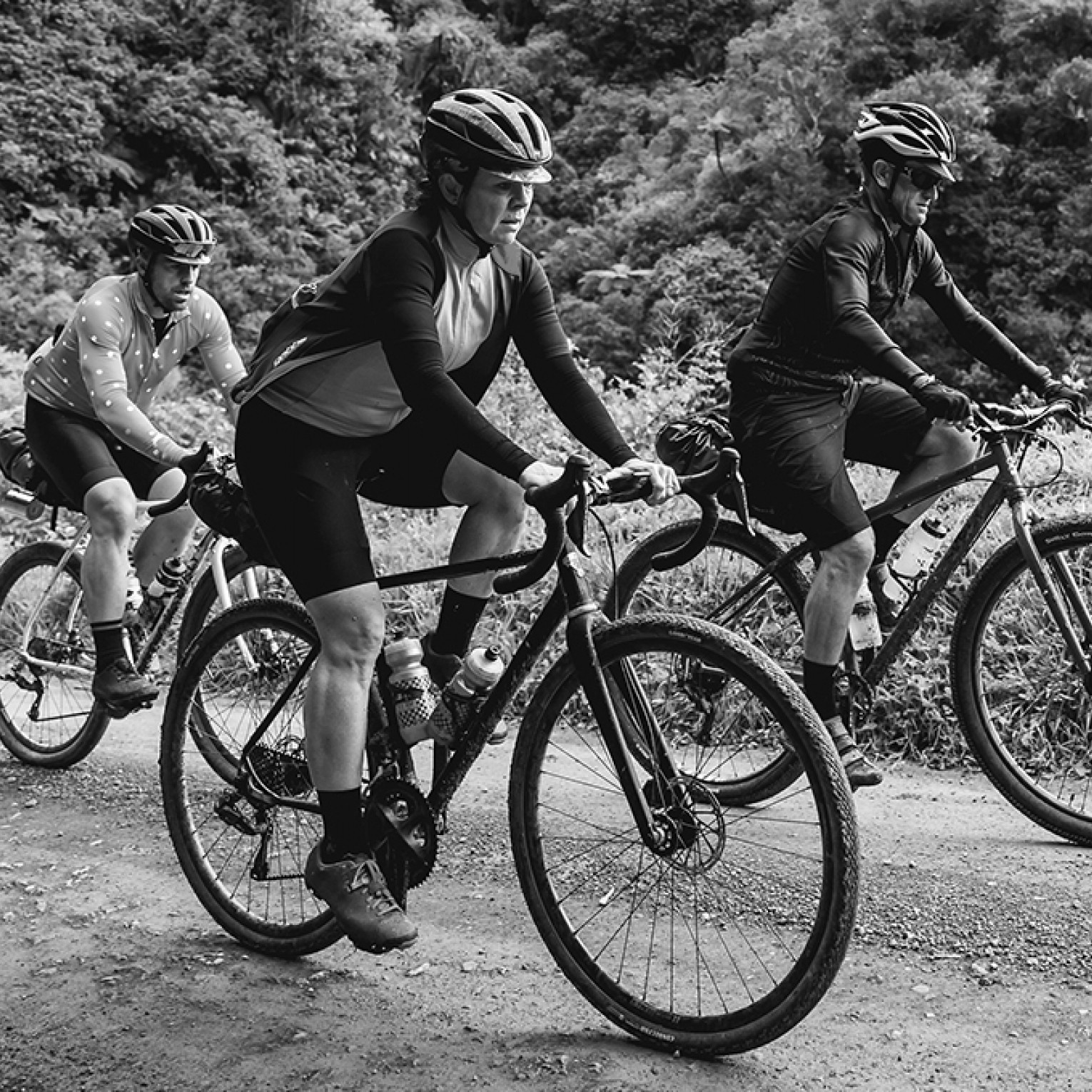Home⁄
Pakihi Track is a brilliant journey, but it demands your respect and care all the way!
Pakihi Track is an advanced (grade 4) mountain biking adventure. This track suits mountain bikers with good off-road riding skills and considerable riding experience.
You can expect:
- Narrow track with steep drops next to it
- Obstacles like fallen trees and rocks
You need to have the skills to manage accurate line choice and control braking on loose surfaces.
Do not ride this track during/soon after a storm
Slips, falling rocks and falling trees are much more likely. We strongly recommend not using the track at these times.
Follow all safety signs and carry a distress beacon
These show hazards and recommended walk zones. There are also often new slips, fallen rocks and fallen trees, which won’t have signs.
There is no mobile phone coverage on the track, so carry a distress beacon.
Ride specifics
Pakihi track is 20.3km long. Over that distance, mostly in the first 12km, you descend over 400 metres in altitude. The track is remote forest country, with no mobile coverage.
Pakihi is downhill-only for cyclists (starting from Motu Road), but walkers/runners and track workers may be coming up the track at any time. Always be prepared to stop and let them pass.
There are distance marker posts every kilometre. On each marker, one side has distance gone, the other side has distance to go. There are 25 bridges, each numbered.
From the Pakihi road end, you still have 10km of gravel road then 13km of sealed road, back to Opotiki. The first mobile reception comes near the Tutaetoko road bridge, about 12km from Opotiki.
Top 11km
> The top 11km of track is in thick forest. Generally the track is fairly wide but in places it is narrow. There are places with big, exposed drop-offs to the side.
> In places, the top half of the track can get slippery, as it is mostly south-facing hillside. Be careful with roots, places where the track is bedrock, and bridge approaches.
> There are often windfall trunks to lift the bike over.
> On the top 11km, some places are signed to walk or to ride slow. Pay attention to these signs!
> You will often need to lift your bike over windfall trees.
> The hut comes at 11km, down a short side track. The hut is a basic DOC hut, with six bunks.
Lower 9km
> Below the hut, the lower 9km of the track follows alongside the Pakihi stream. The track is mostly narrow and in numerous places there are 4-8 metre drop-offs to the side.
> Because the hills above are extremely steep and rocky, in places the track always has some gravel piles, loose rocks, and sometimes rockfall piles.
> On the lower 9km, there are many places signed to walk, ride slow, or hazards such as falling rocks. Pay attention to these signs!
> You will need to lift your bike up two steep rises, and often over windfall trees.
Important safety advice
> You need to have the skills to manage accurate line choice and control braking on loose surfaces. If unsure, walk Pakihi Track instead.
> Ride an appropriate bike. A gravel bike is OK if you have the skills, but generally a mountain bike is best. Only ride an ebike or loaded bike on Pakihi if you are able to lift it over windfalls, and push it up a short, steep slope.
> Only ride alone if you are experienced in doing so.
> Don’t rush. Give yourself plenty of time.
> Always look ahead, and anywhere you are not sure you can ride safely, walk with your bike on the outside of the track. There is nothing wrong with walking long sections!
> The terrain is extremely dynamic. The track can be in great condition one day and messed up the next. Rain or high wind always causes damage. Always expect the unexpected.
> Do not ride in heavy rain or high wind. After a storm, the track may be impassable. Contact us for updates.
> You are strongly advised to take a personal locator beacon, available for hire from Opotiki iSITE or Cycle Gisborne.
> Take bike tools, puncture repair/tube, and a first aid kit.
> Take warm clothes and a jacket, even if the weather is good.
